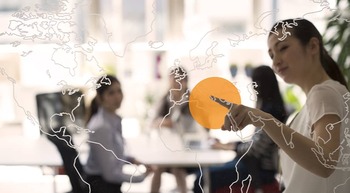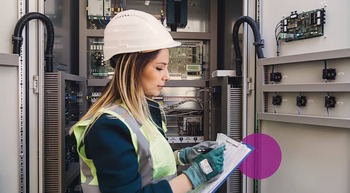Climate risk – don’t wait for a storm or a flood to hit before you protect your business
Published on Mar 15, 2022
The frequency of natural disasters – including storms, floods, hailstorms and droughts – is increasing at a concerning pace. Indeed, according to the World Meteorological Organization, 17 of the 18 hottest years on record occurred in the 21st century. In France, 2017 was the year that saw the most natural disasters since 1982. In particular, droughts have become a “major problem”, says Charles Dumartinet, Major Risk Manager at COVÉA. It is undeniable, medium-sized companies face ever-increasing threats from climate risk.
Consequently, the FFA (French Insurance Federation) estimates that natural disasters and climate change will cause claims expenses to double, from €48 billion between 1988 and 2013 to €92 billion between 2014 and 2040.
Flooding
Medium-sized companies are especially exposed to natural disasters. Heavy rain or snowfall can jeopardise the stability of the roof of your industrial facilities. Hail can damage you motor fleets, while storms can rip off the roof of your warehouse. Climate change aggravates risks such as wildfires, which can reduce your well-established business to ash, and flash floods, which can damage your company’s IT server.
After storms, hail and snow, which account for half the compensation paid by insurers over the last 25 years, and well ahead of droughts (16%), floods are behind over a third (34%) of climate-related claims. Consequently, their cumulative cost between 1988 and 2017 totalled €26 billion.
Medium-sized companies are particularly exposed to the risk of flash flooding, as one third of them are located in flood risk areas, which affects 21,000 of the 35,000 communes in France. Floods caused three of the five most catastrophic natural disasters ever recorded in the country, all of which occurred at the beginning of this century and cost over €3.2 billion.
Implementing comprehensive solutions
Your top priority is to identify the risks you face. For example, is your facility located in a flood zone or a region that frequently suffers violent storms? MMA has developed genuine expertise in studying the occurrence of climate events.
In 2007, we became the first company to develop a major risk engineering programme, which has made Covéa the benchmark provider of climate risk management services.
Charles Dumartinet, Major Risk Manager at COVÉA, explains “the Major Risk division at COVÉA – which is made up of climatologists, forecasters, engineers, developers, geomatics engineers and actuaries – develops models to assess losses due to natural disasters, which then enables us to deploy comprehensive solutions to improve risk management across all our business lines.”
Assessment and prevention – the solution to mitigate risks
Once the danger has been assessed, you must put in place measures to bolster your resilience. Our role as an insurance provider is to help you better understand the risks your company faces by considering the exposure of your facilities to certain hazards. We have developed a number of solutions, such as Coventéo and Covisiomap, to provide risk managers with analysis tools to prepare how the company would manage a particular crisis. If their factory is located in a flood risk area, inventories should be raised to account for the potential of rising water, and IT servers should not be installed on the ground floor. Protective measures, such as cofferdams, serve to stop water from entering the premises.
Similarly, bad weather alerts help to anticipate danger and put in place appropriate measures to safeguard the business as effectively as possible.
Although it seems unavoidable that the world will experience more and more natural disasters in the coming years, we offer a range of prevention solutions to enable you to develop a crisis management strategy and therefore mitigate the impact on your medium-sized company.
Charles Dumartinet
Major Risk Manager at COVÉA
Read more
-
MMA cargo insurance
Cargo risks are frequently underestimated, and in some instances customers and brokers may even be unaware of them.
-
Risks companies face when expanding into the international market
-
Compensation – making a key step easier
Over their lifetime, companies must deal with many unforeseen events, and a disaster can have substantial consequences on their finances and teams.
-
Fires are the number one risk for medium-sized companies
For further information about MMA’s insurance solutions, please contact your insurance broker






